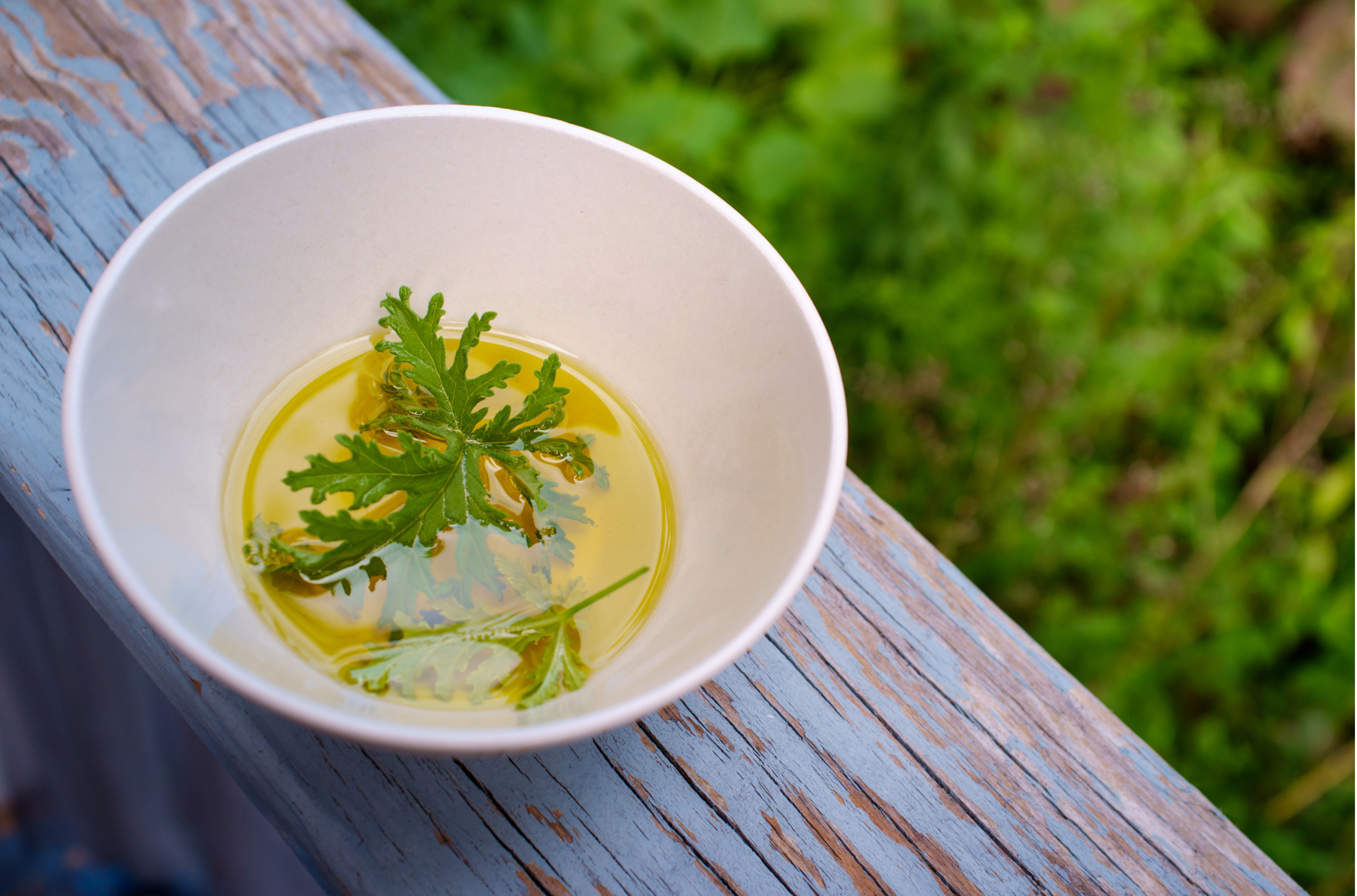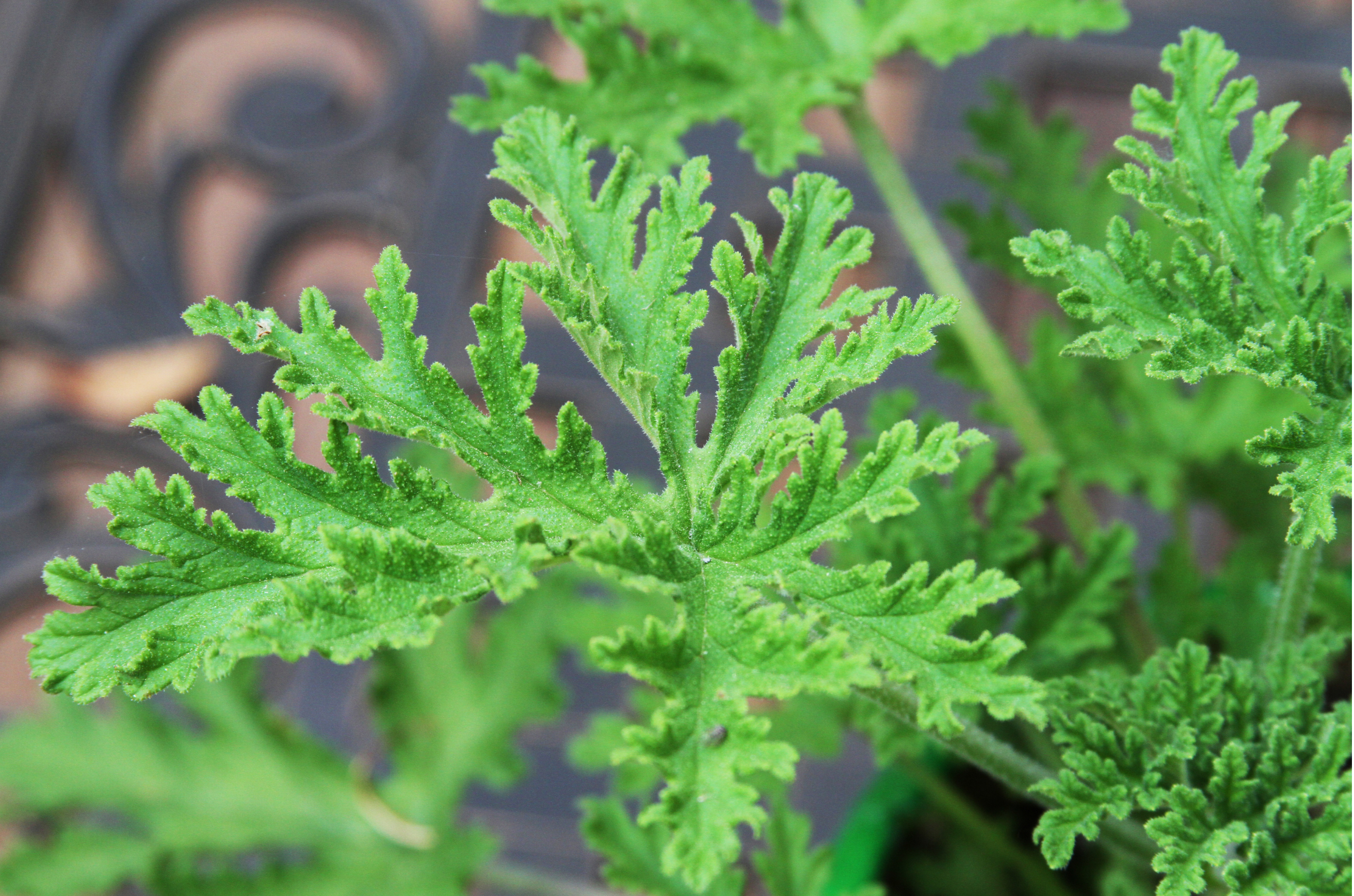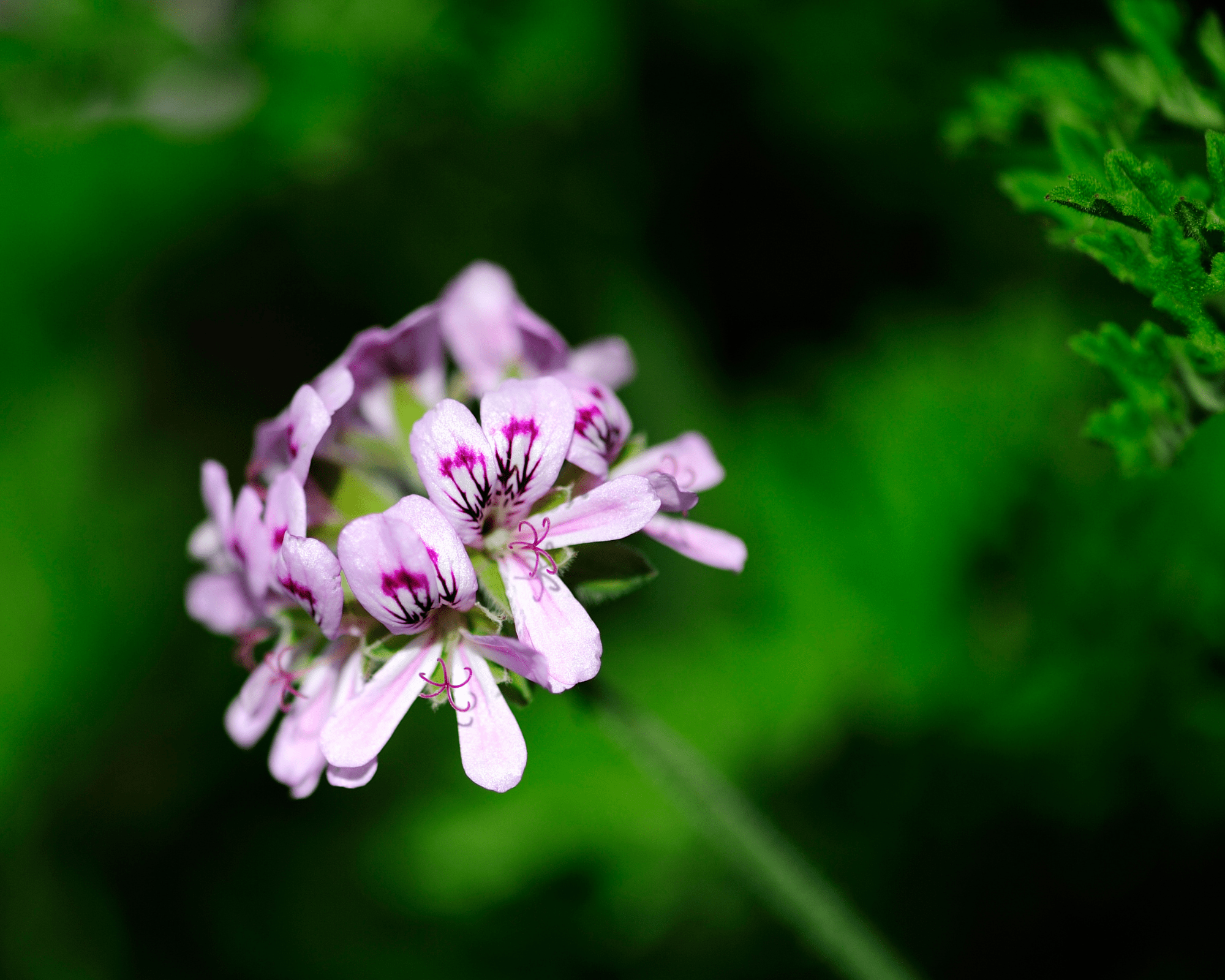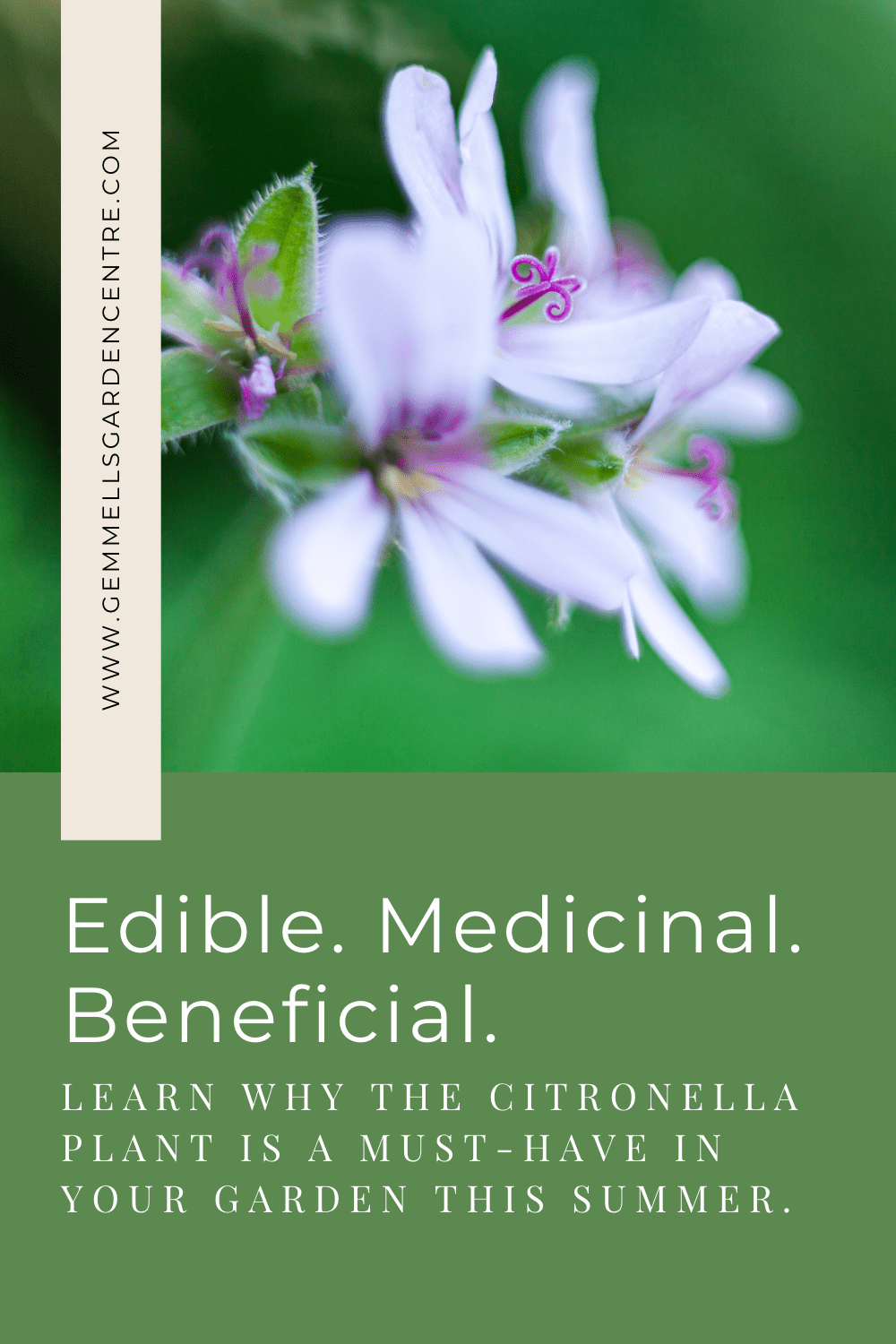Edible, medicinal and beneficial, the citronella plant isn't just for repelling pesky mosquitoes.
The scented geranium or citronella plant (Pelargonium Citronellum) is a much sought-after plant in the summer months, primarily for its mosquito-repelling properties, but it actually has quite a variety of uses.Citronella is Edible
The citronella plant can be used to add a little citrus zing...
- in your cooking, from meat dishes to salads, and many other recipes
- added as a flavouring in baked goods, butter, jellies and ice cream
- made into a tea
When used in baking, be sure to place the leaves on the bottom of the pan before pouring the batter into the pan. Once cooked, remove the leaves. The flavour becomes infused into the cake during the baking process.
To make tea with it, simply dry a few leaves, crush them up and measure out 2 tsp into a cup or mug and add boiling water.

Medicinal Herb
In its native continent, Africa, the citronella plant has traditionally been used as a medicinal herb. It is used for a variety of ailments, including but not limited to intestinal, kidney and respiratory issues. Wounds, fevers and parasitic infections. Also used in the treatment of head lice and as an anti-fungal agent.
It is known to be a hair growth stimulator and is beneficial for the skin in that it helps retain moisture and fights acne. Caveat: the use of citronella on the skin should be tested, to avoid any possibility of allergic reaction. In other words, don't spray yourself with citronella before doing a small spot test.

Mosquito Repellant
Now for the number one attraction regarding citronella: as a mosquito repellant. It works, but there are things that you need to do in order to gain all the benefits of its repellant properties. When going outside to spend time on the patio or deck, fluff your plants' leaves, this will release the scent and repel the mosquitoes. You will need more than one plant for the area. Also, pick a few leaves and crush them onto your skin. You can also make a citronella spray, much like you would make tea. Again, be sure to spot-test before applying.
How To Propagate The Citronella Plant
Towards the end of the season, in late summer, it is time to propagate your plants for the next summer. Simply take cuttings from healthy, non-woody stems, about 2 to 3 inches long. Make sure to leave two leaves at the tip of the cutting. Add rooting hormone. Pot the cuttings. You can also root them in water, I've had a lot of success with this method. Follow the same practice described above but instead of placing it in soil, place it in a glass jar with water and give it bright light. Once the roots are nice and big, you can pot your plant.
Beneficial to Bees, Butterflies & Hummingbirds
All in all, the citronella plant is a must-have in your backyard or in your gardens. They have a delicate pink flower that bees and butterflies love. These plants repel mosquitoes but are innocuous to beneficial insects like butterflies, and North American ladybugs. Hummingbirds also seem to like these plants when in bloom.

The citronella plant not only aids in the comfort of your surroundings but adds texture and colour to your backyard/garden living space.
Enjoy!

Gemmell's Garden Centre Smiths Falls & Brockville - Your Ottawa Valley Garden Centre
Proudly serving Stittsville, Kanata, Smiths Falls, Brockville, Kemptville, Manotick, Carleton Place, Perth, Merrickville, Cornwall, Richmond & everywhere in between.
